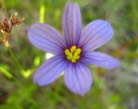Sign up for FlowVella
Sign up with FacebookAlready have an account? Sign in now
By registering you are agreeing to our
Terms of Service
Loading Flow


Graphics with
Columns of Contentflora
birch,
maple
aspen
white pine
sugar maple
paper birch
kelp
Irish moss
acorn
Of the evergreens, red spruce still predominates. Ramrod straight with reddish-brown bark and sharp, stiff needles, it can grow as tall as 75 to 110 feet—although on Acadia’s rocky mountaintops, dwarf spruce one-tenth that size are common. Outside the park, red spruce is heavily logged for pulp. White spruce, which has silvery-brown bark and bluish-green needles, is also found here.
For centuries, evergreens dominated much of northern Maine. When the last glacier receded, spruce and balsam firs outnumbered such deciduous trees as birch and aspen. These coniferous trees inhibited the growth of other vegetation with their long shadows and needles, which, as they decayed, produced acidic soil.

Flora
A lichen, pale gray in color and known as old man’s beard, festoons the spruce trees that grow near shore. Like their mountaintop cousins, the trees and plants that grow along the coast are often dwarfed and twisted—the result of fierce winds and highly saline ocean spray.
To Acadia’s earliest inhabitants, no tree was more important than the paper birch. They used the birch’s tough, white bark to craft baskets, canoes and wigwams. Prized by native tribes and settlers alike was the sugar maple, whose sweet sap produces that New England delicacy, maple syrup.

